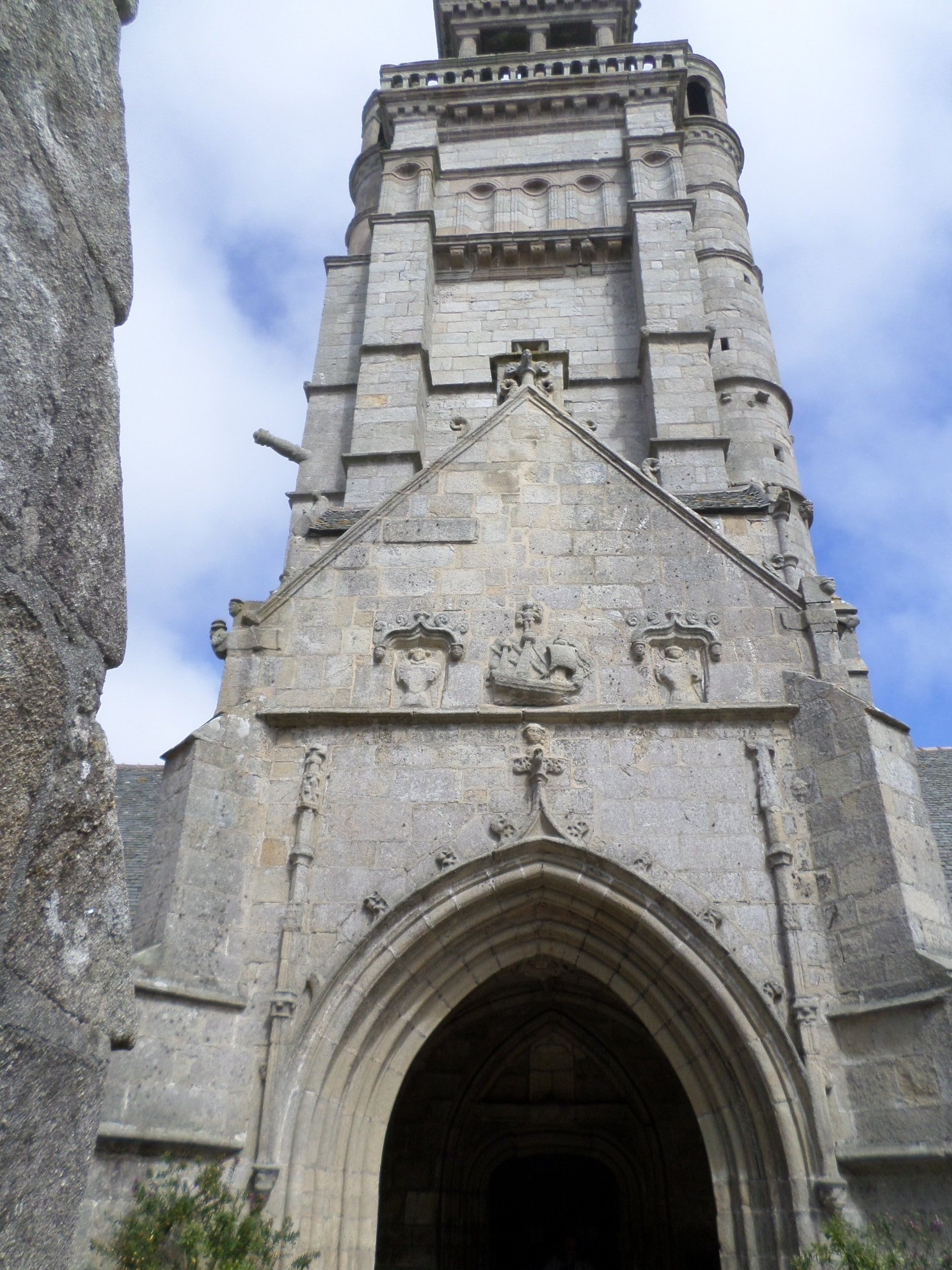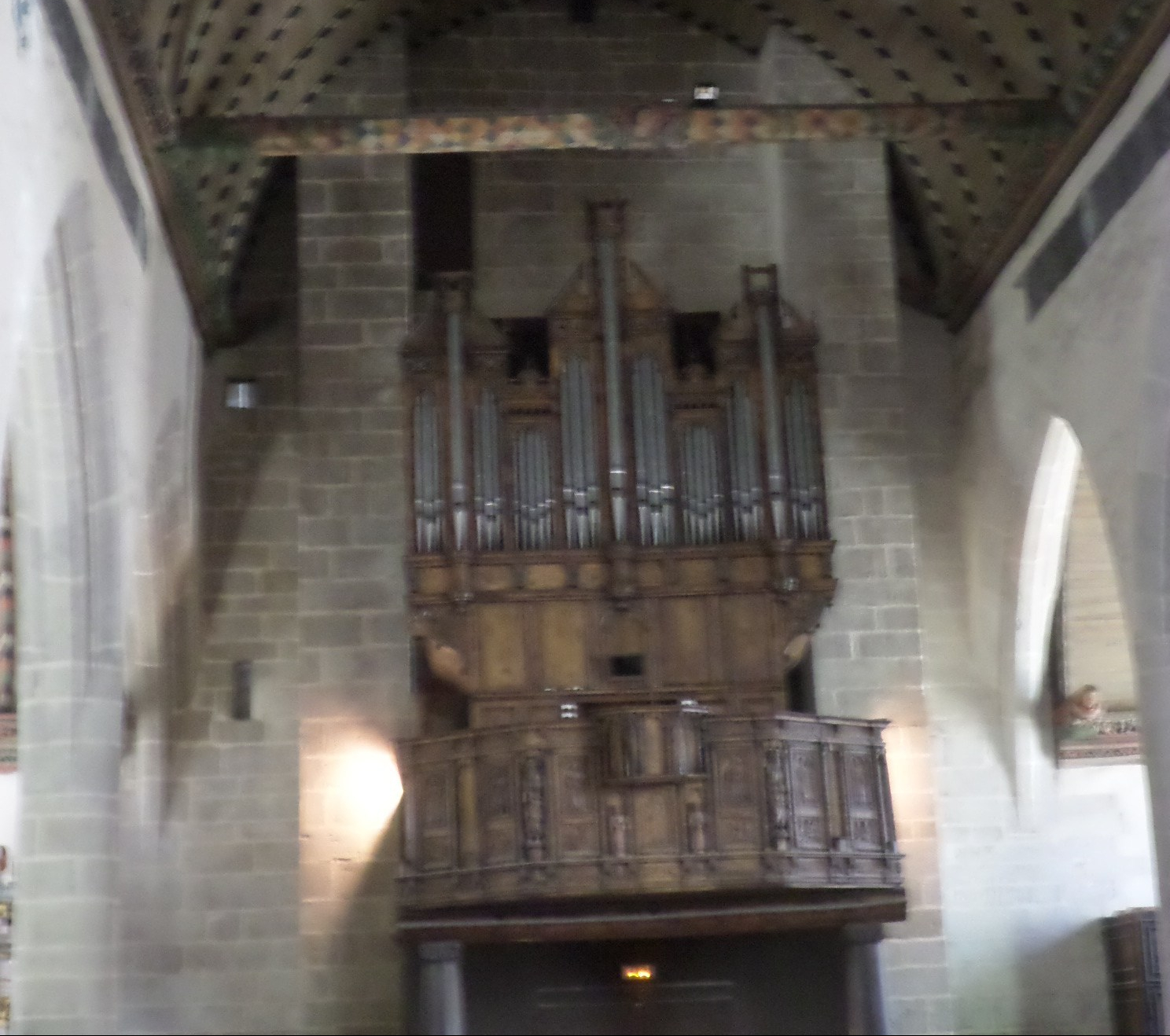And let go north again in my Bretagne on the coast of Finistére dept 29 to take you to the quant nice town of Roscoff. I have written several posts on it in the past in my blog, but again feel a single post on its Church is merited. Therefore, here is my take on the Church of Notre Dame of Croaz Batz of Roscoff!

As to the name of Croaz Batz ,this is the best explanation for this term. There was on the plains, not far from the present church a small mound formed by a pile of rocks; it was there that you embarked to move to the island of Batz, the l’Ile Basse or low Island of the Gallo-Roman period. A cross planted at the top of the mound protected the passage, from or the name of Croaz-baz. The plain was thus created with a vast land-lot, which was attached to the coast, and that was where the Church was built.ok!


The granite construction of the Church of Notre Dame de Croaz Batz in Gothic and Renaissance style, decided in 1515, was undertaken between 1522 and 1545, on land taken from the sea, near the cross of the pier of the Isle of Batz, on the initiative of the ship-owners, despite the reluctance and the pressures of the Bishop of Saint Pol. The construction was financed by the same ship-owners who joined the merchants of Roscoff. It was only in 1550 that the inhabitants were granted the right to have their children baptized and to bury their dead and the Church was consecrated only in 1590. The sacred enclosure contain in the Notre Dame of Croaz Batz Church are two ossuary chapels, one Gothic, the other Henri II style, and the funeral monument of Dorothée Silburne, who hosted in London, Mgr de la Marche, the last Bishop of Leon, emigrated in 1790 fleeing the French revolution. In the Center of the city, the Renaissance bell tower rises since 1585. There are balustrades, domes and lanterns. The rest of the Church, before, remains Gothic. The roof of the nave is paved, at the jointing of two panels of slate, of granite slabs that form like a narrow staircase to the sky. Three naves carved in the walls recall the craft of the donor’s ship-owners.


Inside, many altarpieces are exhibited such as the Rosary, Agonizing, Saint-Pierre, Sainte-Geneviève. A painting of our Lady of Guadeloupe standing in front of a leather of Cordoba altar recalls the ties with new Spain. The frame paneling was laid in 1610-1611. The most notable is the alabaster Chapel, dedicated to Saint Joseph and built in 1634 instead of a porch. It presents seven 15C Alabaster bas-reliefs reported from Nottingham during regular exchanges on both sides of the channel. The baptismal font was melted in 1690 in reported pewter from Cornwall. The northern Chapel was added in 1701. See first pictures of the altar of the three saints Saint Barbara accompanied by those of Sainte Catherine and Sainte Geneviève ,in the middle is Santa Barbara. The Interior was refurbished in 1777.


The first organs, dating from 1606, were deposited in 1649 to be replaced by more grandiose ones, inaugurated in 1650. In 1887, they were strident. The current organs were received in 1888 and supplemented by three new games plays delivered in 1929.

Some webpages to help you plan your trip and worth it me think are:
The Roscoff tourist office on the church: https://www.roscoff-tourisme.com/fr/fiche/patrimoine-culturel/eglise-notre-dame-de-croas-batz-roscoff_TFOPCUBRE029V52BJZ2/
The Finistére dept 29 tourist office on Roscoff: https://www.toutcommenceenfinistere.com/article/roscoff
The Bretagne tourist board on Roscoff: https://www.brittanytourism.com/destinations/the-10-destinations/pink-granite-coast-morlaix-bay/roscoff/
There you go folks, again another lovely town and beautiful monument of my lovely Bretagne. Hope you enjoy the post and do visit ,the Church Notre Dame de Croaz-Batz , nice and worth the visit me think in Roscoff.
And remember, happy travels, good health, and many cheers to all!!!
